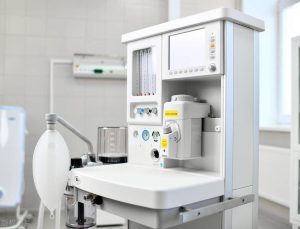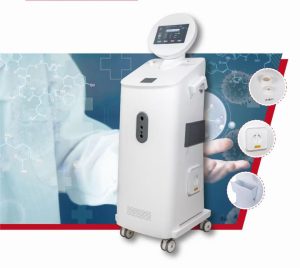Anesthesia machines are common and important equipment in operating rooms and are primarily known for their role in anesthetizing patients during surgery. While healthcare professionals are often concerned with the proper operation of these machines, the importance of their sterilization process is often overlooked. Today we will discuss how to properly disinfect an anesthesia machine.

Anesthesia machine equipment
Revealing the significance of anesthesia machine disinfection
Before delving into the sterilization process, it is necessary to understand the basic structure and function of an anesthesia machine. These machines consist of breathing circuits, gas delivery systems and control systems, all of which are critical components to ensure their proper operation. Regular inspection, cleaning, and replacement of filters and verification of control system accuracy and stability are important steps in maintaining anesthesia machine functionality.
The importance of disinfection of anesthesia machines
Next, let’s discuss why disinfection of anesthesia machines is important. The anesthesia machine is in direct contact with the patient's respiratory system. If disinfection is not sufficient, there is a risk of cross-contamination. We need to ensure the personal health of patients and medical staff from external factors. Therefore, regular disinfection of anesthesia machines is a key link that requires careful attention.
Disinfection standards
Disinfection procedures for anesthesia machines must follow strict protocols, including the selection of appropriate disinfection equipment, disinfectants, and correct disinfection methods to ensure reliable disinfection results. During the disinfection process, focus should be placed on key components such as the internal breathing circuit, mask, and exhalation valve of the anesthesia machine. These parts are prone to bacteria and viruses and require targeted disinfection.
Selection of disinfectants: Prioritize the selection of disinfectants with effective antibacterial efficacy and appropriate concentrations to ensure effectiveness and safety of equipment and operators. In addition, choosing appropriate disinfection equipment that can sterilize the internal pipelines of the anesthesia machine, such as the YE-360 series anesthesia breathing circuit sterilizer, can significantly improve the disinfection efficiency.

Anesthesia machine internal disinfection equipment
Store correctly
In addition to regular disinfection, proper storage conditions are critical to maintaining the hygiene of an anesthesia machine and ensuring its reuse. Anesthesia machines should be stored in a dry, well-ventilated environment away from direct sunlight and high temperatures. Equipment managers should regularly check storage conditions to ensure equipment remains in optimal working condition.
in conclusion
Understanding an anesthesia machine should not be limited to basic operations but should also include understanding its basic structure and correct sterilization methods. This approach creates a safer healthcare environment and helps prevent unnecessary cross-contamination.